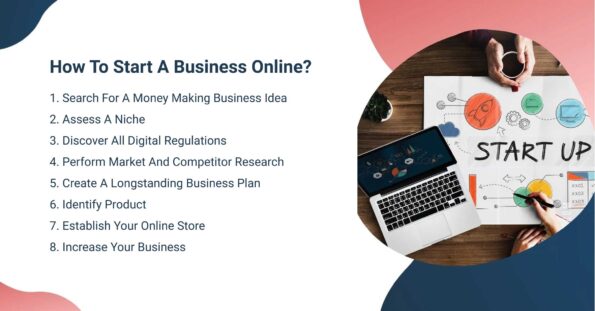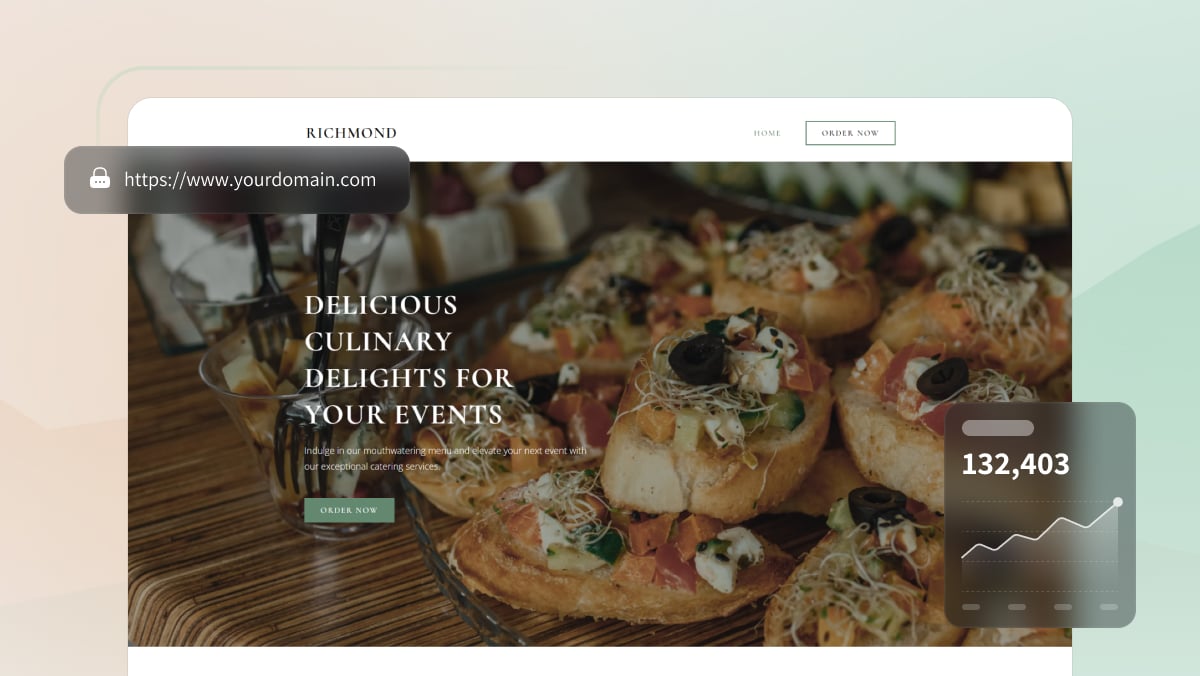Your Step-by-Step Guide to Launching a Digital Business
Ready to ditch the 9-to-5 or take your side hustle to the next level? In today’s connected world, launching a digital business has never been more accessible—or more promising. Whether you’re offering online courses, selling products, or providing freelance services, the digital space gives you the power to reach a global audience from your laptop.
This post is your step-by-step guide to launching a digital business, crafted for aspiring entrepreneurs who want a clear, practical path. We’ll walk through everything—from finding your niche to marketing your brand—with real-world advice and zero fluff.
Let’s dive in!
What is a Digital Business?
A digital business is any venture that uses online platforms to sell products or services. This includes:
-
E-commerce stores
-
Digital products (eBooks, courses, software)
-
Online coaching or consulting
-
Freelancing services
-
Affiliate marketing
-
Membership or subscription models
Unlike traditional brick-and-mortar businesses, digital businesses are often low-cost, scalable, and location-independent.
Why Start a Digital Business Now?
-
Low startup costs (often under $500 to begin)
-
High scalability with minimal overhead
-
Flexible lifestyle—work from anywhere
-
Access to global markets 24/7
-
Growing demand for digital products and remote services
The only thing stopping you is knowing where to start. That’s where this guide comes in.
🚀 Your Step-by-Step Guide to Launching a Digital Business
Step 1: Identify Your Niche and Business Model
Before you build anything, you need clarity on two things:
-
What are you selling?
-
Who are you selling to?
Ask yourself:
-
What skills or knowledge do I have?
-
What problems can I help people solve?
-
What are people already paying for in this space?
Popular digital business models include:
-
Selling digital products (templates, courses, printables)
-
Providing services (design, marketing, coaching)
-
Running a subscription/membership community
-
E-commerce (dropshipping or print-on-demand)
-
Affiliate marketing
💡 Tip: Use tools like Google Trends, Reddit, and AnswerThePublic to research demand in your niche.
Step 2: Validate Your Idea
Don’t skip this step! You need proof that people are willing to pay for what you’re offering.

Ways to validate:
-
Survey your target audience
-
Offer a beta version or MVP (minimum viable product)
-
Look at competitors—are they profitable?
-
Test a landing page with a call-to-action (CTA)
🛠 Tools: Typeform for surveys, Carrd or Leadpages for quick landing pages.
Step 3: Choose a Business Name and Domain
Pick a name that’s:
-
Simple and easy to spell
-
Relevant to your niche
-
Available on social media and as a domain
Use Namechk or GoDaddy to check availability.
💡 Pro Tip: Get a .com domain if possible—it’s still the most trusted TLD.
Step 4: Set Up Your Website
Your website is your digital storefront. Even if you’re just starting, it needs to look professional and be mobile-friendly.
Options for building a website:
-
No-code: WordPress (with Elementor), Wix, Squarespace
-
E-commerce: Shopify, WooCommerce
-
Service-based: WordPress + booking tools (like Calendly)
Include these essential pages:
-
Home
-
About
-
Services/Products
-
Contact
-
Blog (for content marketing)
🛠 Tools: Canva (for visuals), Grammarly (for copywriting), Unsplash (for free images)
Step 5: Set Up Your Legal and Payment Structure
Even digital businesses need to be set up properly.
-
Register your business (sole proprietor, LLC, etc.)
-
Get a business bank account
-
Set up payment processing: Stripe, PayPal, or Square
-
Add legal pages: Privacy Policy, Terms of Use, Disclaimer
📌 Tip: Use templates from Termly.io or consult a small business attorney for legal compliance.
Step 6: Build a Basic Online Presence
Before you start selling, set up your core online platforms:
-
Email marketing platform: ConvertKit, MailerLite, or Mailchimp
-
Social media profiles: Focus on 1–2 channels where your audience hangs out
-
Google Business Profile: Even online-only businesses can benefit from this SEO boost
Start creating valuable content that aligns with your brand and educates your audience.
Step 7: Create and Launch Your First Offer
Your “offer” is more than just a product or service—it’s a solution to a problem.
Create a minimum viable offer to start:
-
A PDF guide, mini course, or 1:1 session
-
A template or toolkit
-
A beta version of a membership or product
Launch it to a small group first—email list, social media followers, or even friends. Use this feedback to refine your offer and build confidence.
Step 8: Drive Traffic and Get Your First Customers

Now it’s time to market your digital business. Start with organic strategies:
-
Content marketing: blog posts, YouTube, SEO
-
Social media marketing: Reels, TikToks, posts
-
Email marketing: send helpful tips, updates, offers
-
Networking: online communities, Facebook groups, LinkedIn
Later, you can invest in:
-
Paid ads (Google, Facebook, Pinterest)
-
Collaborations with influencers or affiliates
🎯 SEO Tip: Target long-tail keywords (like “how to create an online fitness course”) for easier ranking early on.
Step 9: Optimize and Automate
Once things are running, it’s time to optimize and scale.
-
Analyze what content or offers convert best
-
Automate email sequences and social posting
-
Upsell or cross-sell existing customers
-
Create systems (SOPs) for repeatable tasks
-
Consider hiring help (virtual assistants, freelancers)
Use analytics tools (Google Analytics, Hotjar, etc.) to make data-driven decisions.
🙋♀️ Frequently Asked Questions
Q1: How much money do I need to start a digital business?
You can start with as little as $100 to $500, especially if you’re offering services. Key costs include a domain name, website hosting, and maybe a logo or design software. As you grow, you’ll invest more in tools and marketing.
Q2: How long does it take to make money?
It depends on your offer and execution, but many people start seeing income within 3–6 months. Focus on creating value and building trust. Quick wins are possible, but sustainable income takes time and consistency.
Q3: Do I need to be tech-savvy?
Not at all. Most tools today are no-code or drag-and-drop. Platforms like Shopify, Wix, and Canva are made for beginners. And if you get stuck, there are freelancers and tutorials for nearly everything.
Q4: Is starting a digital business still worth it in 2025?
Absolutely. The digital economy continues to grow, with more people shopping, learning, and working online than ever. There’s plenty of room for new creators and entrepreneurs, especially in niche markets.
💬 Final Thoughts: Take the First Step
Launching a digital business can feel overwhelming at first—but it’s also one of the most empowering decisions you can make. The tools are out there. The audience is waiting. And the timing? It’s perfect.
Start small. Take messy action. And remember: every successful digital entrepreneur was once a beginner too.
👉 Need help getting started? Leave a comment or reach out—we’re here to support your journey.
🔑 Key Takeaways
-
Choose a niche that aligns with your skills and market demand
-
Validate your idea before going all-in
-
Build a simple, professional online presence
-
Create and launch your first offer quickly
-
Focus on building trust and delivering value
If you found this guide helpful, don’t forget to share it with a friend who’s ready to launch their own online business!





